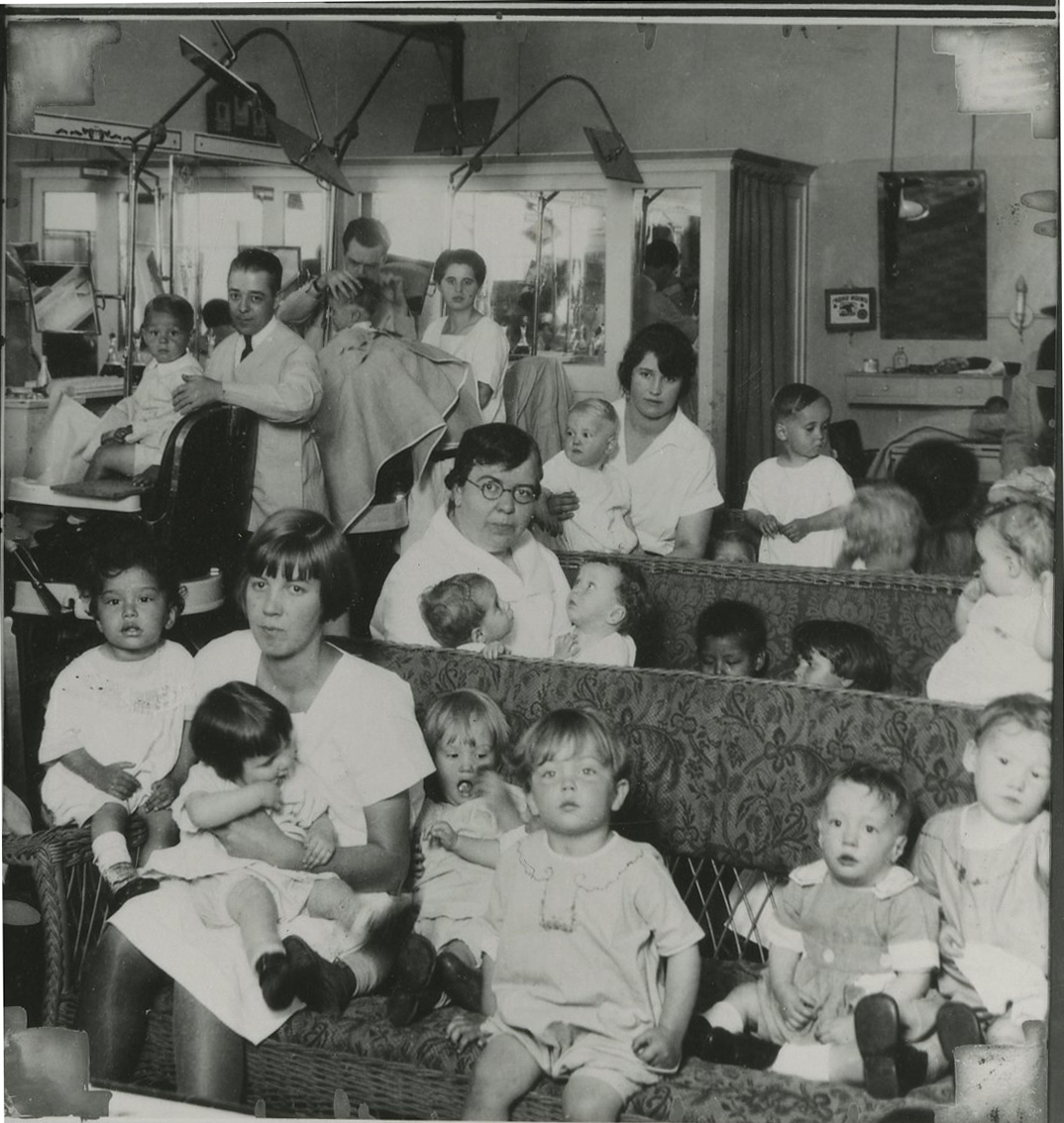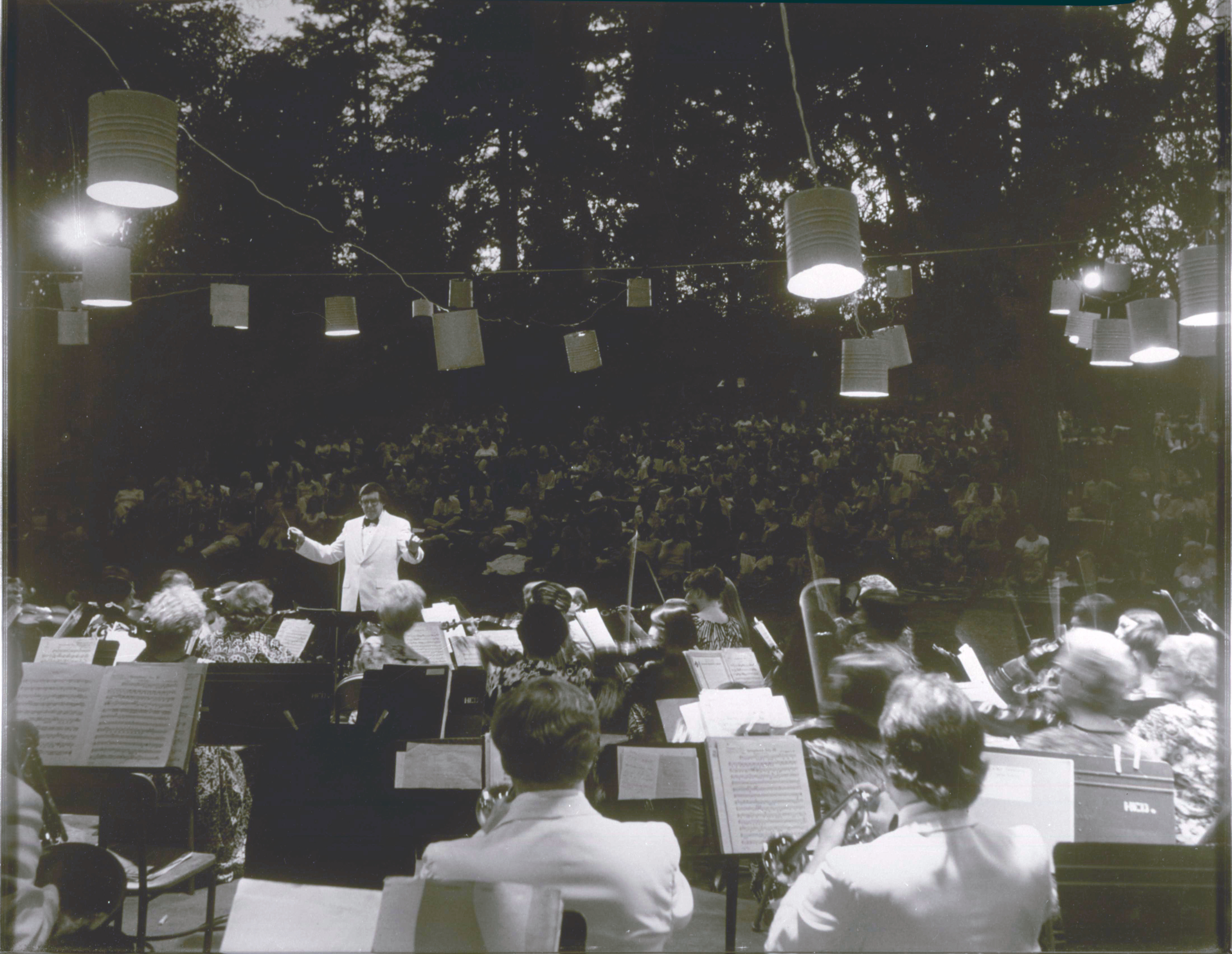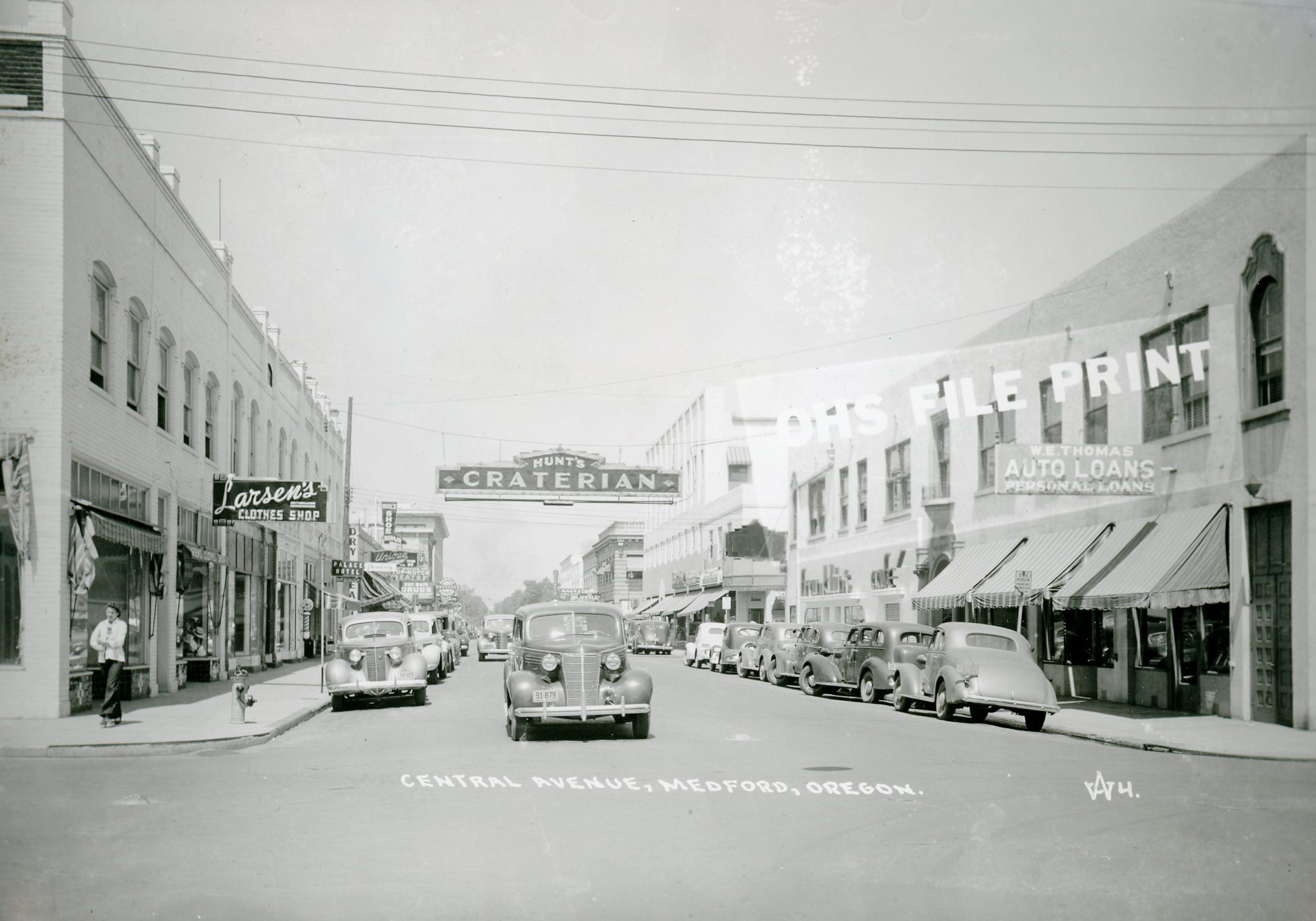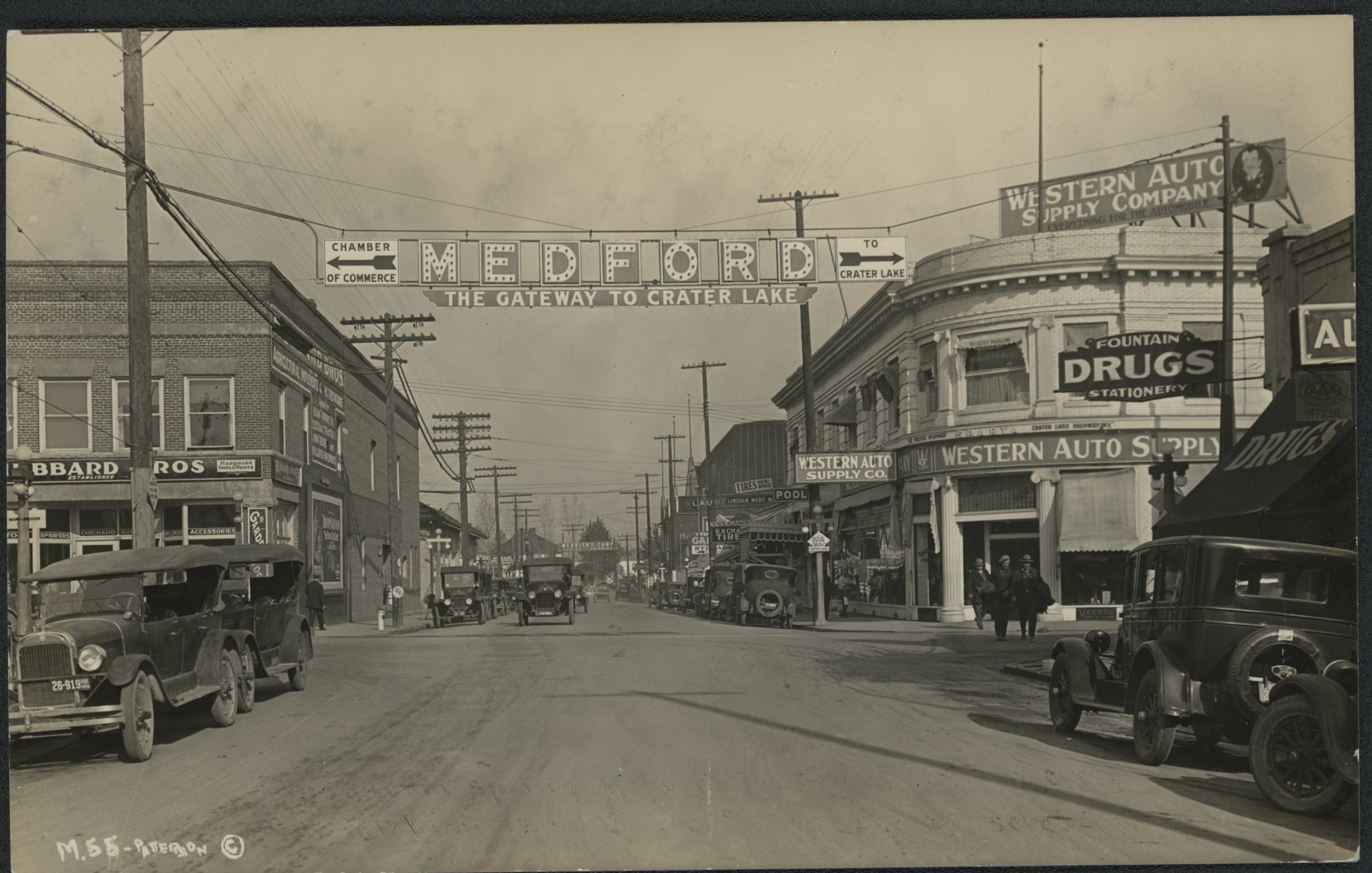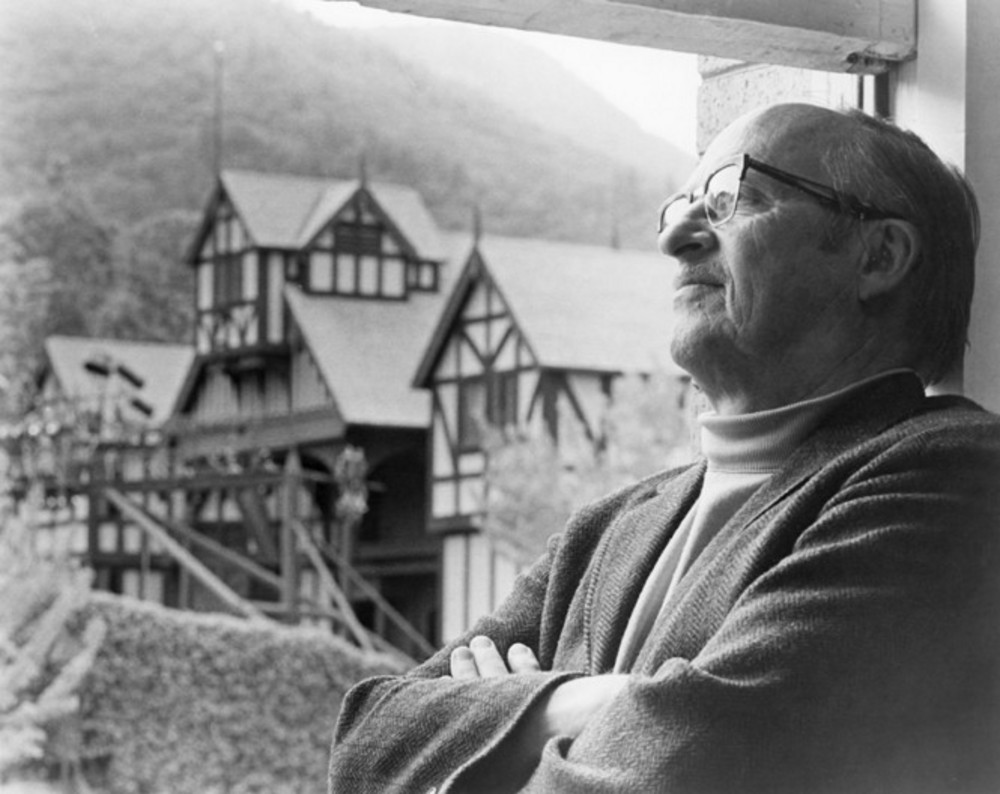The Carpenter Foundation was first established in southern Oregon in 1942 to support recreational opportunities for military personnel. In 1958, the fund was reorganized as a foundation, and it has since grown to support activities in human services, education, the arts, and public interest issues.
Born on May 7, 1881, Alfred St. Vrain Carpenter—also known as A.S.V. or Alf—was educated at Harvard University. He moved to southern Oregon in 1909-1910 with his brother Leonard. With little background, the two established the Veritas Orchard, becoming agriculturists along with dozens of other well-to-do transplants to the Rogue Valley during what is known as the Orchard Boom.
In 1920, after Leonard’s marriage, Alfred Carpenter took a world cruise, during which he met and fell in love with Helen Bundy. The couple was married in Cairo, Egypt, in March 1922.
Helen, born on February 26, 1886, was the daughter of Harlow E. Bundy, who had co-founded the New York-based Bundy Manufacturing Company with his brother Willard in 1889. The company held important patents for punch clocks, used to track worker hours, and by 1911 it had merged with three other companies to form the Computing-Tabulating-Recording Company. In 1924, CTR was recapitalized at $12 million under the leadership of Thomas J. Watson and was renamed International Business Machines (IBM). The family retained major stockholdings in IBM, which grew substantially in value with that firm’s success.
Alfred and Helen Carpenter lived for a short time in Pasadena, California. In 1926-1927, Alfred returned to the Rogue Valley with his new wife, and they built a large house near Central Point named Topsides. The Carpenters’ home became well known for parties and social events, many of which were held in support of the couple’s charitable interests. Alfred Carpenter continued to operate the orchard and helped found a local cooperative, Southern Oregon Sales. He later served on the board of COPCO, a regional utility, and the Medford Irrigation District, both important southern Oregon institutions.
In 1942, as the Rogue Valley faced the challenges of World War II, the Carpenters used their own funds to establish the Jackson County Recreation Committee to provide entertainment for military personnel stationed at Camp White. The Committee formalized the couple’s personal charitable interests and after the war provided financial support to Medford’s Community Hospital, the local Red Cross, and many other institutions and individuals. In 1952, the Carpenters provided a challenge grant that helped spark the original funding for the Rogue Valley Medical Center (RVMC).
The Carpenters long supported the Oregon Shakespeare Festival (OSF) in Ashland, to the point of providing ivy cuttings from Topsides’ gardens to landscape the walls surrounding the Elizabethan Theatre. Alfred Carpenter served as the chair of the festival’s fund-raising committee.
In 1958, the Recreation Committee was reorganized as The Carpenter Foundation, with Alfred Carpenter as its president. Early recipients of foundation grants included OSF and RVMC, the beginnings of the foundation's focus on health and the arts. Among the foundation’s major projects are Carpenter Hall and the Angus Bowmer Theatre at OSF’s Ashland complex and the Carpenter Center for the Visual Arts at Harvard University, the only building in North America designed by famed architect Le Corbusier. The Carpenter Foundation provided significant funding to encourage the development of the Britt Music Festival in Jacksonville; the Craterian Performing Arts Center in Medford; and Medford’s chapter of the American Red Cross, which was long housed in a building designed by Alfred and Helen’s son, architect Harlow Carpenter (1926-2009).
Helen Bundy Carpenter died on September 13, 1961. Alfred married Helene Salade Donker in 1962. With help from his nephew, Dunbar Carpenter, and Dunbar’s wife Jane, he built the Carpenter Foundation into a major philanthropic organization.
Alfred Carpenter died on December 17, 1974. Eric Allen, editor of the Medford Mail Tribune, wrote: “Mr. Carpenter and his first wife, the late Helen Bundy Carpenter, are now gone but their generosity will ensure that they will be perpetually, and gratefully, remembered by thousands of people who, and who will continue to be, benefited.”
The Carpenter Foundation was capitalized at almost $20 million in 2011. Under the stewardship of Dunbar (1915-2008) and Jane Carpenter (1915-2007) and now their children, Karen Allen and Emily Mostue, the family manages the foundation to support the arts, health, and community-based activities in southern Oregon.
-
![]()
Alfred Carpenter.
Courtesy the Carpenter Foundation -
![]()
Helen Carpenter.
Courtesy the Carpenter Foundation -
![]()
Karen Carpenter Allan and Emily Carpenter Mostue.
Courtesy the Carpenter Foundation
Related Entries
-
![Albertina Kerr Centers]()
Albertina Kerr Centers
The Albertina Kerr Centers, a nonprofit organization with headquarters …
-
![Arlene Schnitzer (1929–2020)]()
Arlene Schnitzer (1929–2020)
Arlene Schnitzer was a patron of artists, a philanthropist, and the nam…
-
![Britt Music Festival]()
Britt Music Festival
When the Britt Music Festival opened in Jacksonville, Oregon, on August…
-
![Craterian Ginger Rogers Theater at the Collier Center]()
Craterian Ginger Rogers Theater at the Collier Center
When fourteen-year-old Virginia Katherine McMath, better known as Ginge…
-
Hallie Brown Ford (1905-2007)
Hallie Brown Ford was a philanthropist who gave millions to support the…
-
![Medford]()
Medford
Medford, the county seat of Jackson County, was platted in 1883 in the …
-
![Oregon Shakespeare Festival]()
Oregon Shakespeare Festival
The Oregon Shakespeare Festival (OSF), under the leadership of Angus L.…
Related Historical Records
Map This on the Oregon History WayFinder
The Oregon History Wayfinder is an interactive map that identifies significant places, people, and events in Oregon history.
Further Reading
Capitol’s Who’s Who for Oregon 1948-1949. Salem, Ore: Capitol Publishing Company, 1949.
Kramer, George. Topsides-The A.S.V. and Helen Bundy Carpenter House. National Register of Historic Places Nomination Form, 2004.






